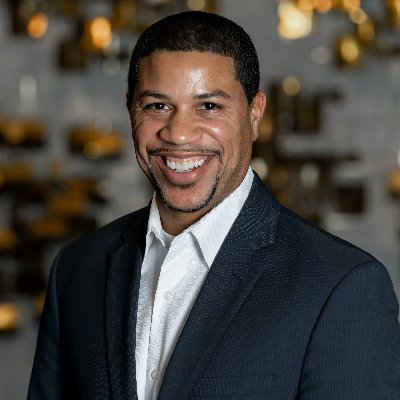We lose a lot of time every day. And the more distractions we accept into our life, the more our time gets chopped up into little bits and we forever feel like we are getting nothing done.
Terry Monaghan is one of those few people who keeps their head above the clouds and can help the rest of us see the absurdity of the way we live. We surround ourselves with distractions, reinvent the wheel all the time, and treat busyness as if it was a competitive sport.
What we learned from this episode
-You can be very productive in all the wrong things.
-Busy doesn’t mean productive.
When did we get to the point where priority became a plural noun?
Do you have clear protocols for how someone should handle email/messages, when you can send emails
Very few of the communuication we use requires an immediate answer, but we treat all of it as if it does
Busyness is not a competitive sport.
What you can do right now
-Turn off your messaging systems
-Write up protocols for how people in your company should use email, messaging, and other channels
-Don’t send messages after you leave the office. Use a task management system to remind yourself instead.
Key Quotes
“If you allow one interruption, more than likely, you’re going to be interrupted 7, 8, 9 times before you can bring your focus back.
“Busyness is not a competitive sport.”
Today, our guest is Terry Monaghan. She’s the CEO of Time Triage and this is Work Minus Overwhelm. Hi, Terry. How are you?
I’m great. How are you?
Excellent. Not feeling too overwhelmed at the moment, but hopefully we’ll stay that way. Terry, tell us a little bit about yourself. What was it like for your journey to become a time management expert?
It was a very interesting process actually. My background’s operations. So, I was in an operations position with a consulting firm that was growing rapidly. But like many companies, it had this predominant culture of everybody running around with their hair on fire. And I could never quite understand why were people so excited about whatever the drama of the day was when you could see it coming for about a year and a half. Until I realized, they couldn’t and I could because I was very good at putting out the fires. I was just also always putting in a structure underneath. Because same fire, different day is just boring and doesn’t show a lot of imagination. You could probably tell I also have a bit of a wicked sense of humor. But unfortunately, when you get sufficient structure in place, the culture shifts from everybody running around putting out today’s fire to everything working at a much higher level but smoothly and easily. And planning and maintenance didn’t look like work. So, they figured that things were running so smoothly they didn’t need me anymore. And said, “Thank you, you’ve obviously done an awesome job. But clearly we don’t need you anymore. So good luck. God bless. Off you go.” And I was shocked.
The second company… oh, six weeks later, I got a phone call from somebody there, saying, “Well, how do we do this?” And I said, “It’s in the operations manual that I left behind.” And she said, “Well, how do we do this other thing?” And I said, “Well, that’s also in the operations manual that I left behind.” And “Well, how do we do this?” “Well, also, it’s in the operations manual that I wrote and left behind.” At which point she just sort of cried and said, “You made it look so easy.” And the second company, obviously, I’d gotten the job very quickly, but it turns out if you don’t plan and maintain, things really do start falling apart in about six weeks. And the next company I managed to work myself out of in a similar situation but much quicker in 18 months. And the same kind of series of phone calls about six weeks later. And I remember thinking, wow, they don’t see what I see when I’m looking at something. That’s odd. And then the third and final company, I worked myself out of the position in 11 months flat. And I realized, oh, they don’t see what I see when I’m looking at something. So, what I do must be a skill set, which didn’t occur to me because, of course, it came so easily to me. It was automatic. And I figured if I was going to be working myself out, I was now going to be doing it on my terms. So, I just began consulting and coaching in producing results and it morphed into performance and productivity because I discovered people are just working way too hard.
And I’m glad you brought that up because productivity is a big theme for us on the show and recognizing that productivity is not just about how you measure machines and making sure that they’re always on and constantly working. But human productivity is much different than that.
Correct. And I heard a great quote, you could be very, very productive on all the wrong things.
That’s a good one.
Busy doesn’t mean productive.
Well, let’s just start with the start of the day, all of us get a certain amount of time to work, whether it be eight hours or more or less. But no matter what, that time period is usually significant. But a lot of times it feels like that time just flies away and we get to the end of the day, we’re, like, what did I actually do? So, what are the reasons that we feel like time slips away from us?
Well, for one thing, email is the bane of all existence rather than a really good tool to foster communication, performance, and productivity. The way people are using email as if it was some form of instant message is getting in the way of them being able to get anything done. And it adds to the one main thing, which is we haven’t been trained in how to really take control of our time, and specifically manage the interruptions that are an inevitable part of our lives. By default, we are going to be interrupted about once every three minutes. It used to be once every six minutes, and it’s gotten worse. And that could be a colleague stopping by our desk. It could be a phone call. It could be an email. It could be a Slack message, a pop up, a ding, a text. It could be anything but it’s going to happen about once every three minutes if we don’t take specific action. Now, if that were not bad enough, it takes us on average 23 and a half minutes to bring our focus back to what we were working on before we were interrupted. So, it doesn’t take a rocket scientist to figure out that that math is just not going to work. Because if you allow one interruption, more than likely, you’re going to be interrupted 7, 8, 9 times before you can bring your focus back. And this is why we can hit our desk at 9:00 in the morning, and at 5:00 o’clock have nothing to show for the day, except the sensation physically that we’ve been really crazy busy all day long. But we’ve been reacting, reacting, reacting, and didn’t get anything of substance done.
Exactly. And we had a conversation with Dr. Gloria Mark who actually created a lot of this research that we’re talking about. And with her, we talked about the difference between internal and external distractions. I find in my own life that even if I have a long period of time to work, even then I still will almost create distractions in my own mind every three minutes, every six minutes that come up.
Exactly. And we get that little bitty endorphin hit when we solve some little thing that was distracting us. So, sometimes that is the self distraction. Sometimes the internal distraction that was also related to the fact that we may be trying to work against our own energy cycles. We may be trying to do some really thoughtful, deep work at a point where we just don’t have the brain capacity anymore to do that kind of work.
That’s great and I actually want to get in deeper to the topic of energy management. It’s not something we’ve really talked about a lot on this show, but I think it’s very important. So, tell us what you know about energy management throughout the day.
Well, I like Tony Schwartz’ book, “The Way We’re Working Doesn’t Work,” where he talks about energy using the definition from physics, which is just the capacity to perform work. And he makes the distinction, as you mentioned earlier, human beings are not machines. We’re not designed to be on, working at a specific pace, hour after hour after hour. It doesn’t work that way. And we need to replenish our energy on a regular basis. And for a human being, we replenish our energy in four ways. One is we have to replenish physical energy. And we do that by eating, sleeping, moving, and resting. And then we have to replenish our mental energy. We have to replenish our emotional energy. And we have to replenish our spiritual energy. Now, the mental is our ability to focus. Our emotional energy is our ability to maintain a positive mental attitude or a positive attitude towards what we’re doing. And our spiritual energy is about knowing that what we’re doing at some level is actually making a bigger difference.
I find it interesting that the way we recharge energy is either through moving or by resting. Yet most of what we do in the work world is just sitting, which is like neither of those things.
Well, it also goes in cycles. The best of us can only focus on something for about 90 minutes at a time. Most of us right now, unfortunately, have an attention span that’s shorter than a goldfish. A goldfish can focus for about nine seconds. We can focus for about seven.
So, I’ve always wanted to ask somebody about this statistic about the goldfish because we have these things that say we can only focus for seven seconds. But then you said earlier that we can focus for up to 90 minutes. So, what’s the difference between the two, the short-term focus and the long-term focus?
Well, the seven second is where we’ve been trained for that little endorphin hit. Like the phone dings so you go look and see what’s the thing that just came in. The phone rings, depending on what generation, I know my nieces and nephews never answer the phone when it rings. But you go, you’re pulled by whatever the distraction is, right? So, because you get a little hit, and we’re addicted to that little hit of endorphin. And that’s why it’s so uncomfortable for some people to try to focus and when I’m working with my clients on getting them just to focus, sometimes we just start with five minutes, or 15 if we’re feeling particularly ambitious. And you have to just turn off and eliminate all other distractions to give yourself that 15 minutes. But then most people are shocked at how much they actually get done in that 15 uninterrupted minutes. I read another study several years ago where a number of Fortune 500 executives were interviewed, and they said they felt incredibly lucky if they actually had about 45 minutes in the course of a day to focus on the most important aspects of their job moving the company forward. Now the tragedy is that that 45 minutes was often scattered throughout the day like confetti, rather than in one 45-minute burst. And if you’re only going to have 45 minutes to focus, what do you think it would be like if you just took 45 minutes and focused, and then let the rest of the day go the way the rest of the day is going to go?
Well, let’s stick with CEOs for a little while. It seems like any person in organizations, people who are at the current top leadership levels, are always pulled into meetings and pulled into extra things and it seems like they don’t have the ability to manage their own time. So, what are ways that CEOs and other top level leaders can really take that time back and own it better?
Well, when they get very, very clear about what the priority really is, and I found it interesting, I heard one author talk about we say priorities as if there are multiples, but there can only be one priority at any given moment. So, what’s the priority? And then whatever the request for time is is either going to move you closer to accomplishing that particular goal or it’s going to be a distraction. And I believe it’s Warren Buffett, who said, you say no to more things than you say yes to. The most successful say no to far more things than they say yes to. And I would challenge your statement that they’re pulled into all of these meetings. Some of them are allowing themselves to be. Others are much more in control of where they let their focus go and where they don’t.
I like what you’re saying. But I feel like it’s very difficult to put into practice a lot of times, and especially for leaders who are really helpful by nature. If somebody on their team comes up and says, “I need help with this,” the first response that many people have is just, “Yeah, you can have my time.” They want to be available to other people that are there. Yet at the same time, that’s where a lot of the time goes because they get pulled into these kinds of meetings. So, what’s an effective way that a CEO can make sure that people know that, yes, I think what you’re doing is very valuable, but I don’t think that I’m necessary to pull into this conversation right now?
Well, you do something exactly like that, rather than I’m not needed for that, but here’s where you can get the resource you need. You just rather than being the one… look, a lot of people I work with are very, very smart. And very, very smart people often want to do it themselves. But that’s not the best use of their time. So, training yourself to point somebody in the direction of where they can find the information they need to do what they’re trying to do is far better because you’re training people to also begin to think for themselves and rely on resources that are available, rather than you being the one who has to provide everything. Because if you’re the one who has to provide everything, you are going to be the biggest bottleneck in your business.
So, let’s broaden this now to not just the leaders but leaders who want to create a culture of time management around them. What are some ways that people can create the culture where everyone is respectful of others’ times and also respectful of their own time?
Well, one thing is really looking at what are the roadblocks? What are the things getting in the way? What are the default ways of being that are detrimental to people being able to perform? So, some of that is a culture of meetings. You don’t need to be spending 90% of your time in meetings. What are the point of the meetings? Another is do you have protocols that are clearly stated for how email is handled? Or by default, is everybody thinking that everything that comes in has to be dealt with immediately? I work with organizations where we’ve set up protocols that you have an agreement to respond to emails within X amount of time, and it’s not five minutes, it may be 24 hours. And that instant message is kept for something that’s truly instant. But remember, instant message is also an interruption. And you never know what somebody else is working on, and where you’re going to be breaking their focus. So, setting some protocols for how business can operate, and what the rules are. If you’re leading by example, that is you’re not sending emails at 10:00 o’clock at night. Because let’s face it, people are going to be checking their email at 10:00 o’clock at night out of fear. And if they see an email from the boss, they think, well, if the boss sent it at this hour, they must need an answer at this hour, which is nonsense.
I find that to be a very powerful topic. Because if you have a leader who is sending out emails and notifications late at night, even if they say I don’t expect people to respond immediately, just reply back whenever it’s convenient for you. It doesn’t really work like that. It doesn’t matter because people still see if this is the leader, then we need to match up to that we need to go to that despite what’s been said.
Right. Because people pay far more attention to what you’re doing than they will to what you’re saying.
Great. I’m actually very interested in the protocols you talked about about different tools, especially with instant messaging. And we talked about email before and in a lot of ways email still there, but a lot of the problems with email just have been transferred onto these messaging platforms, like Slack and other tools like that. So, what are some of the ways that we can take back the time that we lose in those tools? What are some of the protocols you’ve set up for instant messaging platforms?
Don’t have it be on all the time. Seriously, what kinds of things? They’re very few. If you really look at all the communications that are coming across, there’s very few of them that require an answer right this second. And asynchronous communication may be even better because it’s going to give the recipient the opportunity to think rather than react, which I think most of communication right now is reacting back and forth and back and forth. People text me all the time. I just make it clear I’m not responding to text in real time. I’m working. I’ve turned off all the notifiers. I’m working during the periods that I’m focused, and I have times when I’ll stop and I’ll check my email, and I’ll check any voicemail, and I’ll check any text or WhatsApp or whatever other channel people are using to communicate with me. And I’ll see what needs to be responded to. And I’ll queue it up to be responded to. But it’s because these are tools that I’m using to enable me to get my work done. Which means it’s there for my convenience, not for anybody else’s. Now, you have to also discipline yourself to be very reliable about responding in the way and within the timeframe you’ve given your word to. But once you’ve demonstrated that you’re reliable, people sort of relax about it. And you don’t end up with five emails and four texts asking why didn’t you respond to the first email.
And I get the feeling that the difference between synchronous and asynchronous communication is still being defined in most organizations, and even if people are willing to sit down and say, yes, we feel like in these situations, synchronicity is better and these we’re going to default more to asynchronous. In practice, it’s still hard. You have to be very vigilant about people posting things on to an instant messaging platform as opposed to a board where people can respond at their own leisure. These are tough decisions. And as you say, each culture is different. If my CEO or my boss says that if you send me an email, I’ll probably respond in 24 hours, but it might be later. And don’t send me a text message unless it’s extremely urgent, and who defines what’s urgent? So, these are things we haven’t really defined well, even within companies, let alone across the entire work world.
Right. And interesting book I read recently, I’m pulling up the name of the book. Something like, “It Doesn’t Have to be Crazy at Work.”
Yeah. By the guys at Basecamp.
Yeah. It’s brilliant. I mean, it’s just really great. But they set out from the get go to work that way. And you can’t argue that it doesn’t work because they’re accomplishing what they’ve set out to accomplish. And they’ve created an environment within which that can be done. So, busyness is not a competitive sport, even though a lot of people operate like it is and talk like it is. It’s not getting things done.
Yeah. I love that book. We’re actually having David Heinemeier Hansson on the show soon. And what he and Jason Fried did at Basecamp was a lot of this they built into the culture from the very beginning, or are very early stages. A lot of these things that we’re talking about are not things you can just add into your culture later on. They have to be there from the start.
Well, you can. You can reverse engineer. It takes something. Another great book from years ago was, “Why Work Sucks and How to Fix It,” which was about the implementation of a results only work environment inside Best Buy at the time. And they came up with I think 13 basic rules or principles and had to reverse engineer inside of a traditional culture. And rule number one I think was the employee can work whenever they want, wherever they want, however they want as long as the work is getting done. And the first pushback they got from management was, “Well, if they’re not here, how are we going to know that they’re getting anything done?” And it turned out management couldn’t actually answer the question, “How do you know they’re getting anything done when they are here?” Just because that’s a culture that rewards presenteeism, not performance. So, the results were really, really interesting. They discovered that just by giving people control of their time, that productivity increased anywhere between 35% and 300% in terms of the results being produced.
And I feel like that’s a good reminder that we’re not talking about little hacks, like little tweaks you can make to make you more productive. Like, we need to step back and really look at the entire relationship of work and time, and how to decouple that, how to not have it such a strong connection between the two and really make some big decisions about it.
Especially in an information economy. People are being hired to produce results. We’re not working… you’re not being hired to stand on the factory floor for eight hours and produce X number of widgets anymore. I love what somebody said. I’m not being paid for the 10 minutes it took me to complete this job. I’m being paid for the 10 years of education and training that allowed me to do the job in 10 minutes.
Terry, this has been great. I feel like we’ve hit all the major issues around modern productivity and what we need to think about in terms of the future of productivity, how we measure it, how we act as leaders, how we build teams around it. And we called this episode Work Minus Overwhelm because I think it goes back to even the Basecamp book where one of their themes is that you can be a calm company, you don’t have to be running around crazy all the time and squeezing every minute out of the day in order to be a nice, profitable place to work.
And have a life. What a concept.
Yeah. So, Terry, where can people go to stay in touch with you?
Well, you can find me on LinkedIn under Terry Monaghan. You can also reach me directly at [email protected].
Fantastic. Well, Terry, thanks for being on the show and sharing all your insights with us.
Thank you so much, Neil. It’s been a pleasure.
With over 30 years of business and entrepreneurial experience, Terry’s unique technology has dramatically increased the productivity of Fortune 100 executives and entrepreneurs in a variety of industries. Whether it’s a corporate executive or a “solo-preneur,” the outcome of Terry’s methodology will give you an expanded level of freedom and productivity with results you can measure.
Terry’s clients find themselves working on what is most fulfilling and what really matters in moving things forward rather than what they previously thought they “had to do.” The things you hoped to get to someday become the things you work on today.
Terry’s work was recently featured in the New York Times best-seller Overwhelmed: Work, Love and Play When No One Has The Time by Brigid Schulte (Sarah Crichton Books, March 11, 2014).












